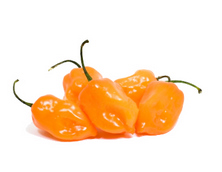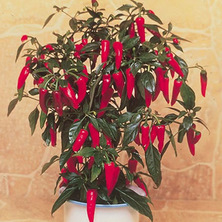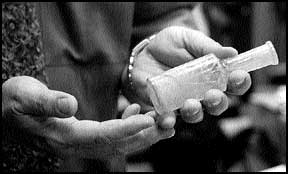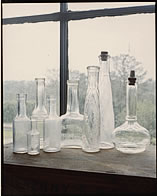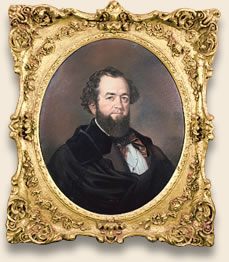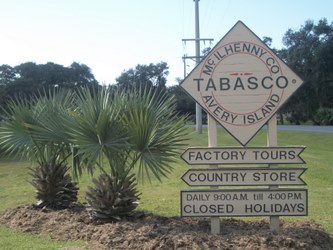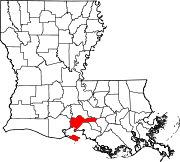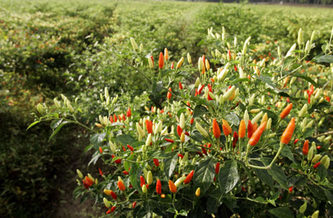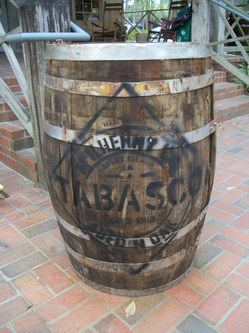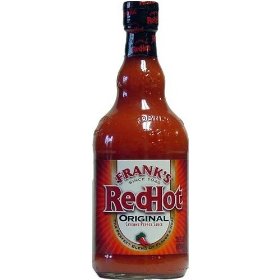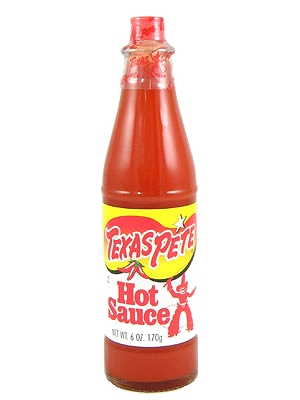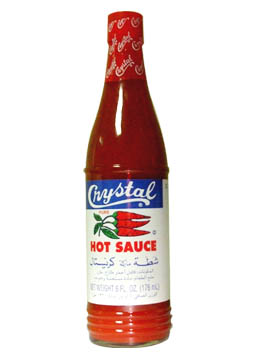I absolutely love learning about hot peppers, hot sauce, spices, and all related topics... I would like to share some cool articles I found searching the web. I have posted the web url's at the bottom of each article for those that want to search further...
Hot Sauce History 101
By Eric Vinje, Cosmic ChileThings may be heating up for hot sauces, but they've been around since humans first realized they could eat chile peppers. Bottles containing hot sauce have been recovered from archaeological digs as well as shipwrecks, according to "The Hot Sauce Bible," The Crossing Press, 1996.
We have had a long love affair with hot sauces in the United States. Advertisements for cayenne sauces appeared in Massachusetts newspapers as early as 1807, according to some reports. In 1849, England's Lea & Perrins Worcestershire Sauce was first imported into the United States from Great Britain.
Many of the first homegrown hot sauces in the United States came from the South. Cajun cuisine and other fiery ethnic foods fueled the drive to make hot sauces.
One of the first mass manufactured domestic hot sauces was Edmund McIlhenny's Tabasco® Brand Pepper Sauce, which came on the market in 1868 and is still made today. According to McIlhenny "family lore," Edmund first bottled his Tabasco® sauce in recycled cologne bottles. The McIlhenny Company has trademarked "Tabasco," which is why it's the only Tabasco sauce on the market today. (Although it is trademarked by McIlhenny, Tabasco actual refers to a geographic and political region in Mexico - where the Tabasco pepper was said to originate.) Similar sauces can note they are made with Tabasco peppers, but can only be known as "hot sauce." In addition, the McIlhenny Company is so proud of its heritage that it is opening a museum in 2006 in New Orleans.
McIlhenny's initial success also spawned a raft of imitators particularly in the roaring 1920s including Trappey's Hot Sauce (made by B.F. Trappey, an ex-McIlhenny employee) as well as Crystal Hot Sauce, according to Linda Stradley's Whatscookingamerica.com web site. Jacob Frank started selling Frank's Redhot Cayenne Pepper Sauce in 1920 and it was this hot sauce that French's, the current owner of Frank's Redhot Cayenne Pepper Sauce, proclaims as the "secret ingredient" in the original Wing Sauce concocted in 1964 by Teresa Bellissimo at the Anchor Bar and Grill in Buffalo, NY. All three of these sauces are continued to be made and sold today.
Some hot sauces didn't tickle the palate of consumers. Heinz, the condiment company based in Pittsburgh, produced a Tabasco Pepper sauce, but it failed to compete with McIlhenny's original and was eventually taken out of production. Other early America hot sauces included a "Chilli Sauce" from E.R. Durkee & Company, which continues today as a spice and condiment company.
http://www.cosmicchile.com/xdpy/kb/hot-sauce-history.html
The History of Hot SauceHow to make your own Hot Sauce | |
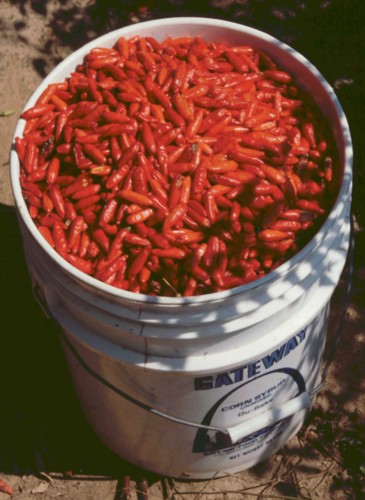 | |
What actually is Hot Sauce made out of?
Hot Sauce is a combination usually of chunks of simmered peppers till they are soft in vinegar and a little salt. You can use any type of peppers that you want, your sauce will be colored by they color of your pepper. Recipe to make your own Hot Sauce from scratch.
Examples
When did man start using Hot Sauce? Hot sauce is about as old as we can find traces of civilization. clues of Hot Sauce containers and the use of it , have been dug up in archeological digs, and when dredging up sunken ships. The Aztecs living where Southern Mexico is now used chili's as far back as 7000 BC. They began cultivating them probably before 3500 B.C. They were used for flavor but also for medicinal purposes. 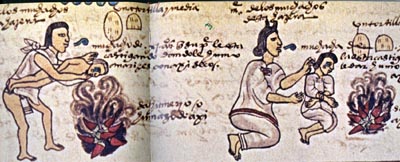
Drawing from the Codex Mendoza depicting aspects of Aztec life.
A child is being punished by being held over the smoke of burning chili peppers.
Columbus most likely brought the peppers to Europe and India where they became popular in any culture that enjoyed spicy cuisine. Evidence of hot sauces have been found in all kinds of ancient ruins, and ships, showing that it has been important in making food more palatable as well as being medicinal , aiding in digestion and is great for the liver. It is also believed that it releases endorphins with that surge of HOT when you eat chilies.
More Recent Finds
Hot sauce is such a huge subject that I will take just one story, that brings out a lot of facts.
He loved these pepper plants and the flavor of them so he decided to make a pepper sauce, and market it. Tobasco is a region in Mexico and also the name of a pepper. Edmund trademarked the name.
| |||||||||||||||||||||||
So why don't you try your hand at making your own hot sauce .
One of the advantages of making your own is that you
can make it as hot as you like it, and develop your
own family recipe.
can make it as hot as you like it, and develop your
own family recipe.
Related Topics
http://kitchenproject.com/history/HotSauce/index.htm
Hot Sauce History
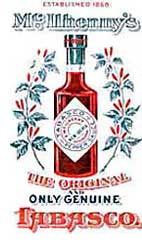 Hot sauces sell like hot cakes and that's actually nothing new. They've been around since the first humans started chomping on red-hot chile peppersand popular ever since someone figured out how good they taste (see Eating Through The Pain).
Hot sauces sell like hot cakes and that's actually nothing new. They've been around since the first humans started chomping on red-hot chile peppersand popular ever since someone figured out how good they taste (see Eating Through The Pain).Thumb through an old issue of a domestic newspaper from the early 1800s and don't be surprised if you come across an advertisement for cayenne sauce. The British Lea & Perrins Worcestershire Sauce hit our shores in 1849.
In terms of our own native hot sauces, one of the first to be manufactured here was Tabasco® Brand Pepper Sauce, which Edmund McIlhenny began selling in 1868 and is still available today.
Most hot sauces originated down south where Cajun cooking and other fiery ethnic foods fueled the drive to make hot sauces. For example, Tabasco® hails from Louisiana. In fact, the initial success of Tabasco yielded a raft of imitators including Trappey's Hot Sauce made by B. F. Trappey, an ex-McIlhenny employee, as well as Crystal Hot Sauce, and Frank's Red Hot Cayenne Pepper Sauce.
Hot Sauce TodayWhat's the trend? The hotter the better, but taste counts too. At hot & spicy food festivals and in cooking classes, I'm always asked: "What's the hottest hot sauce on the market?" A few people are seeking revenge, others like being macho, while some people just can't seem to get their food hot enough. Demand for the most incendiary sauce possible has prompted some makers to market vials of capsaicin (the chemical that gives chiles their sting), which to my mind is akin to extracting caffeine from coffee: caffeine is very powerful (and can kill you), but it misses the point -- taste. Sophisticated in their palates, most Americans are looking for heat and flavor -- not just burn -- and I suspect the most flavorful sauces will be the most enduring.A hundred years ago, when the availability of ingredients often defined a hot sauce style, sauces were easily characterized by geography. Today regional distinctions become blurred, as people take their culinary traditions with them to new countries, and fresh exotic produce is available worldwide. Excerpt from The Great Hot Sauce Book, by Jennifer Trainer Thompson |
http://www.hotsauce101.com/history-lesson.html
These are only a couple websites.....there literally are hundreds of different articles available. I like to share other peoples perspective on this VERY HOT subject. Come back soon as we are building our content for our up and coming website and setting up our launch party for early Spring.
Stay HOT chiliheads!
